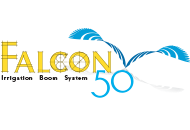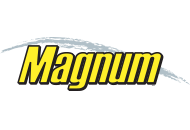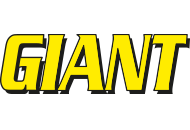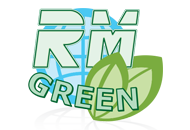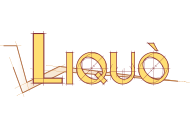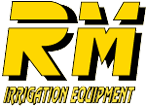How and why Irrigation
Tests carried out on hose-reel irrigation machines
Some of the companies being members of UNACOMA, such as RM, which pay special attention to the agricultural world evolution, with a view to manufacturing machines able to satisfy the production needs of farmers, have decided to invest in the research of new technologies and solutions to improve the on-field performance and technique of their equipment.
In this aim, they have started working with numerous public bodies and institutions.
One of the very first cooperation was that with Canale Emiliano Romagnolo for the start-up of an experimental research project aiming at developping technological innovations able to allow the reduction of power consumption along with the improvement of the water distribution efficiency of their irrigators, also in the presence of strong wind.
Such experimental activity has allotted an investment of about €. 111.000,00 over the 2003-2004-2005 period.
Starting from 2002 until today, surveys and field tests have been funded at major farms: the main aim was to compare sprinkler irrigation through "hose-reel" with drip irrigation through a network of tubing on both on-field crops such as tomatoes, potatoes, onions and beets, and more specific crops. Surveyed parameters are water consumption, energy consumption, labour costs, costs for the purchase of the equipment, costs for fertilization as well as yield in GSP and deriving crop net revenues.
Results of the tests
Results are interesting and have pointed out some worth mentioning data:
- Hose-reel irrigation machines turned out to be the less expensive irrigation system as to purchase costs, labour costs and energy costs;
- Sprinkler irrigation by means of the hose-reel irrigation machines is a true guarantee of company productivity and profitability, to be achieved through lower investments and risks than those entailed by drip irrigation, while GSP of hose-reel irrigated crops – after costs for the irrigation systems and irrigation costs - have better repaid farmers;
- The new version of irrigation machines fitted with control units for computerized management – to which digital technology remote control and command systems have been added – has allowed true water saving and excellent irrigation efficiency;
- The amounts of water used in drip systems in most of our tests have been higher that the amounts used for irrigation through hose-reel irrigation: this is the contrary of what is often told;
- All tests evidenced similar GSPs in the use of the two different irrigation systems (sprinkler and hose-reel), by highlighting a better quality of products irrigated through sprinklers ;
- From the agronomic point of view, as far as drip irrigation is concerned, there is some concern on the remarkable losses of water due to deep percolation due the so called “nail effect” that deprives soil of fertilizers, colloids and organic substance due to the washout effect;
- Fertigation in the drip systems becomes a compulsory and essential crop practice to restore the chemical compounds which are not retained in the soil since, on the contrary, slip underground due to the leaching caused by localized irrigation: consequently, this crop technique causes an increase in costs while remarkably decreasing productive competitiveness of companies using this system;
- During the phases of seed germination and in the support to newly transplanted plants the drip system turns out to be completely useless causing a huge waste of water: in these cases, farmers have been obliged to irrigate with the hose-reel system plants prepared with the drip system, to germinate seeds and start transplanted plants, since drip systems are totally unsuitable to irrigate plants during this vegetative phase: during the summer 2003, a particularly dry year, hose-reel irrigation machines of some companies have been used many times to irrigate tomato crops with drip systems in order to reduce the fall of small fruits and soil cracking caused by dryness;
- From an environmental point of view, it has been noted that the sprinkler systems are totally dismissed at the end of the crop and have to be disposed of after only three months of use: first of all we should deeply investigate on the procedures used for the disposal of the huge amount of Polyethylene tubes that often are not withdrawn by companies specializing in the management of waste due to the dirt they hold. They are extremely huge amounts: one hectare of tomato requires ml. 6.600 of tubing which has to be disposed of at the end of the crop;
- From the financial point of view we must consider that the short use cycle of drip tubes does not justify the high investment entailing a cost of about €. 600,00 per hectare, for something which is dismissed and disposed of at the end of the cropping: an incredibly high amount of money wasted rather than being used by farms for stable investments in equipment. Since in most cases they refer to plants funded with public money with productive purposes, it is quite clear that the goals of the funding itself are not achieved therefore public money is wasted;
Conclusions
Since irrigation machines in a variety of versions are the equipment mostly used by farmers on almost all crops in Italy and abroad, able to distribute turbid waters or zootechnic sewage, I would like to point out some situations which benefit neither manufacturers nor farmers, and which are not justifiable at all, in particular I am referring to:
- Measures of public funding decided by some Regions which are destined exclusively to the funding of micro-irrigation systems, thus unfairly excluding sprinklers and hose-reel irrigation machines ;
- Some ‘consorzi di bonifica’ (reclamation consortia)asks farmers different fees for the taking of irrigation water, with small amounts for drip systems and remarkably higher amounts for sprinklers;
- Organizations of producers and association of O.P., mainly with regard to the tomato crops, apply to EU support destined to the members to fund exclusively the purchase of drip systems, by neglecting any other type of irrigation equipment and any other production technical mean.
In many cases it is an unjustified technical and economical discrimination taking to a clear constraint in the decisions of farmers, by also entailing adverse economical impact, forcing the market of the irrigation equipment, and causing waste of resources and possible environmental damages.
Considering the great variety of agro-pedological and environmental variables, the diffusion of micro-irrigation systems cannot be sponsored and funded always and in any way resorting to commonplaces (drip=water saving) which are not confirmed by agronomic studies and careful surveys carried out on the contexts it is applied to.
RM, constantly committed in the research of ever more competitive equipment, able to manage water resources in a rational and planned manner, so as to use them to the utmost benefit of farmers.
Bibliography
Fertigation
Experimentation





